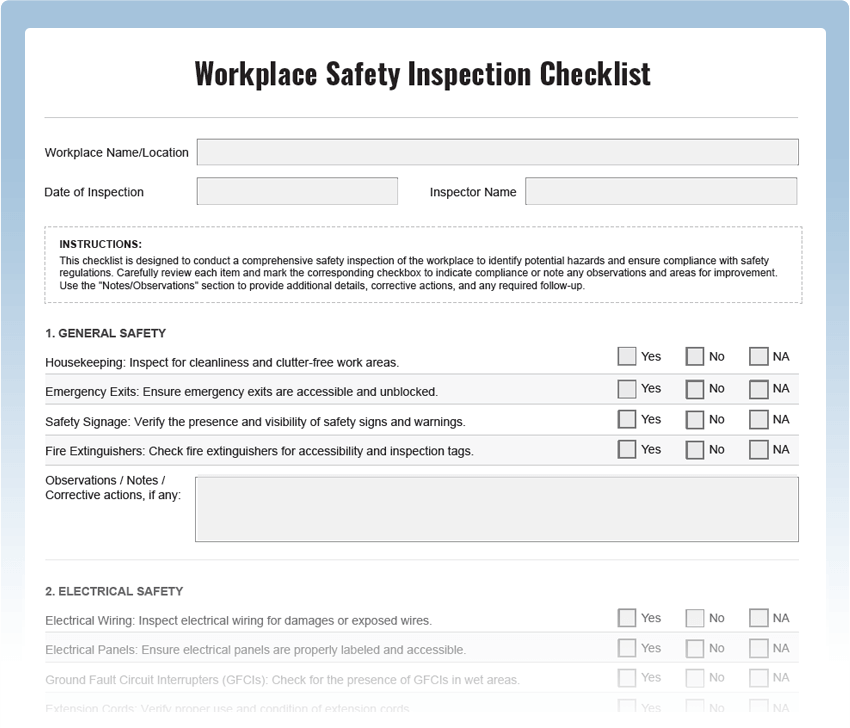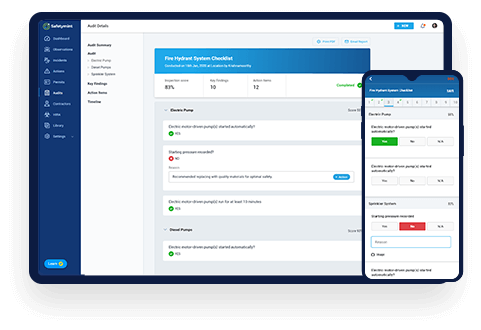Workplace Safety Inspection Checklist
Prioritize the safety and well-being of your employees with our comprehensive Workplace Safety Inspection Checklist. This free PDF template covers all critical aspects of workplace safety, hazard identification, and risk mitigation, empowering you to create a secure and compliant working environment.
Digitize this Checklist on Safetymint
- Create unlimited, customized checklists
- Add Actions, with automated reminders
- Works seamlessly with or without internet
- Access via web browsers, mobile or tablets

What is a Workplace Safety Inspection Checklist?
A Workplace Safety Inspection Checklist is a systematic tool used to evaluate the safety conditions of a workplace or office environment. It includes a series of checkpoints designed to assess potential hazards and identify safety gaps that may pose risks to employees’ health and well-being. Regular workplace safety inspections are essential for preventing accidents, promoting a culture of safety, and complying with occupational health and safety regulations.
Key Areas to Inspect in the Workplace:
- Emergency Preparedness: Evaluate the presence and accessibility of emergency exits, evacuation plans, and first-aid kits.
- Fire Safety: Check fire extinguishers, fire alarms, and sprinkler systems for proper functioning and accessibility.
- Ergonomics: Assess workstations, chairs, and computer setups for ergonomic suitability to prevent musculoskeletal issues.
- Housekeeping: Inspect overall cleanliness and organization to prevent slips, trips, and falls.
- Electrical Safety: Verify that electrical systems and equipment are in safe working condition.
- Hazardous Materials: Assess the proper storage and handling of hazardous substances.
- Personal Protective Equipment (PPE): Verify that employees have access to and use appropriate PPE.
Common Workplace Safety Inspection Findings:
Frequent issues found during workplace safety inspections include:
- Cluttered Walkways: Obstructed pathways leading to potential tripping hazards.
- Inadequate Lighting: Poorly lit areas affecting visibility and increasing the risk of accidents.
- Lack of Training: Employees not adequately trained in safety protocols and emergency procedures.
- Unsecured Cords: Loose or exposed electrical cords creating potential trip hazards.
Workplace Safety Inspection Best Practices:
- Regular Inspections: Conduct routine workplace safety inspections to identify potential hazards.
- Corrective Actions: Address any identified safety deficiencies promptly and follow up on corrective measures.
- Safety Training: Provide comprehensive safety training to all employees, including new hires.
- Safety Committees: Establish safety committees to involve employees in safety improvement initiatives.
- Safety Reporting: Encourage employees to report safety concerns and near-miss incidents.




